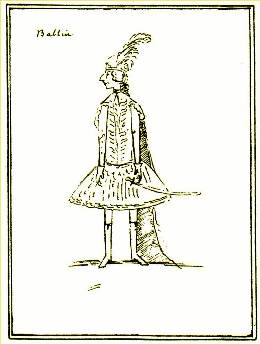
Pietro Antonio Domenico Trapassi, better known by his pseudonym of Pietro Metastasio, was an Italian poet and librettist, considered the most important writer of opera seria libretti.

Leonardo Vinci was an Italian composer known chiefly for his 40 or so operas; comparatively little of his work in other genres survives. A central proponent of the Neapolitan School of opera, his influence on subsequent opera composers such as Johann Adolph Hasse and Giovanni Battista Pergolesi was considerable.
The year 1724 in music involved some significant musical events.

Opera seria is an Italian musical term which refers to the noble and "serious" style of Italian opera that predominated in Europe from the 1710s to about 1770. The term itself was rarely used at the time and only attained common usage once opera seria was becoming unfashionable and beginning to be viewed as something of a historical genre. The popular rival to opera seria was opera buffa, the 'comic' opera that took its cue from the improvisatory commedia dell'arte.
This is a list of notable events in music that took place in the year 1735.
The year 1725 in music involved some significant events.

Gioacchino Conti, best known as Gizziello or Egizziello, was an Italian soprano castrato opera singer.

Artaserse is the name of a number of Italian operas, all based on a text by Metastasio. Artaserse is the Italian form of the name of the king Artaxerxes I of Persia.

Didone abbandonata is an opera libretto in three acts by Pietro Metastasio. It was his first original work and was set to music by Domenico Sarro in 1724. The opera was accompanied by the intermezzo L'impresario delle Isole Canarie, also by Metastasio.

Partenope is an opera by George Frideric Handel, first performed at the King's Theatre in London on 24 February 1730. Although following the structure and forms of opera seria, the work is humorous in character and light-textured in music, with a plot involving romantic complications and gender confusion. A success with audiences at the time of its original production and then unperformed for many years, Partenope is now often seen on the world's opera stages.

Partenope is an opera in three acts by Manuel de Zumaya. Zumaya adapted the libretto himself from a Spanish translation of Silvio Stampiglia's Italian libretto which was first set for performance in Naples during 1699 with music by Luigi Mancia. All told, Stampiglia's libretto was used by a variety of composers for more than a dozen operas that were produced all over Italy, including versions by Leonardo Vinci and George Frideric Handel. Zumaya's version was commissioned by Viceroy Fernando de Alencastre Noroña y Silva and produced at the viceroyal palace in Mexico City on 1 May 1711. The production is the earliest known full opera produced in North America and the first opera written by an American-born composer. However, Parténope is not the earliest opera to be performed in the New World, as some sources have reported. That distinction belongs to Tomás de Torrejón y Velasco's La púrpura de la rosa, which premiered ten years earlier in Lima, Peru.

Catone in Utica is an opera libretto by Metastasio, that was originally written for Leonardo Vinci's 1727 opera. Following Vinci's success, Metastasio's text was used by numerous composers of the baroque and classical eras for their own operas, including Pietro Torri (1736), Antonio Vivaldi (1737), Giovanni Battista Ferrandini (1753) and J. C. Bach (1761).

Annibale Pio Fabri, also known as Balino, from Annibalino, diminutive of his first name, was an Italian singer and composer of the 18th century. One of the leading tenors of his age in a time dominated by the castrati, Fabri is now best known for his association with the composer George Frideric Handel, in whose operas Fabri sang.

Maria Grazia Schiavo is an Italian classical soprano who is particularly known for her performances of music from the baroque period. She has performed with major opera houses in Austria, France, Germany, Italy, and Spain, and has appeared in concerts throughout Europe.

L'oracolo in Messenia is a 1738 opera by Antonio Vivaldi to a libretto by Apostolo Zeno. The opera was composed for the autumn Venetian carnival season of 1738 after Vivaldi took over the Teatro San Angelo from the impresario who had managed it the year before.

Franco Maximiliano Fagioli is an Argentine operatic countertenor.

Sebastiano Biancardi, known by the pseudonym Domenico Lalli, was an Italian poet and librettist. Amongst the many libretti he produced, largely for the opera houses of Venice, were those for Vivaldi's Ottone in villa and Alessandro Scarlatti's Tigrane. A member of the Accademia degli Arcadi, he also wrote under his arcadian name "Ortanio". Lalli was born and raised in Naples as the adopted son of Fulvio Caracciolo but fled the city after being implicated in a bank fraud. After two years wandering about Italy in the company of Emanuele d'Astorga, he settled in Venice in 1710 and worked as the "house poet" of the Grimani family's theatres for the rest of his career. In addition to his stage works, Lalli published several volumes of poetry and a collection of biographies of the kings of Naples. He died in Venice at the age of 62.
Celeste Gismondi, originally known as Celeste Resse and nicknamed La Celestina, was an Italian soprano opera singer, who performed a major role in the première of some works by George Frideric Handel, including Orlando.
Rosmira fedele may refer to:

Catone is an Italian opera by George Frideric Handel. It is one of Handel's nine pasticcio works made up of music and arias by other composers than him. The opera was first performed at the King's Theatre, Haymarket, London, on 4 November 1732.















